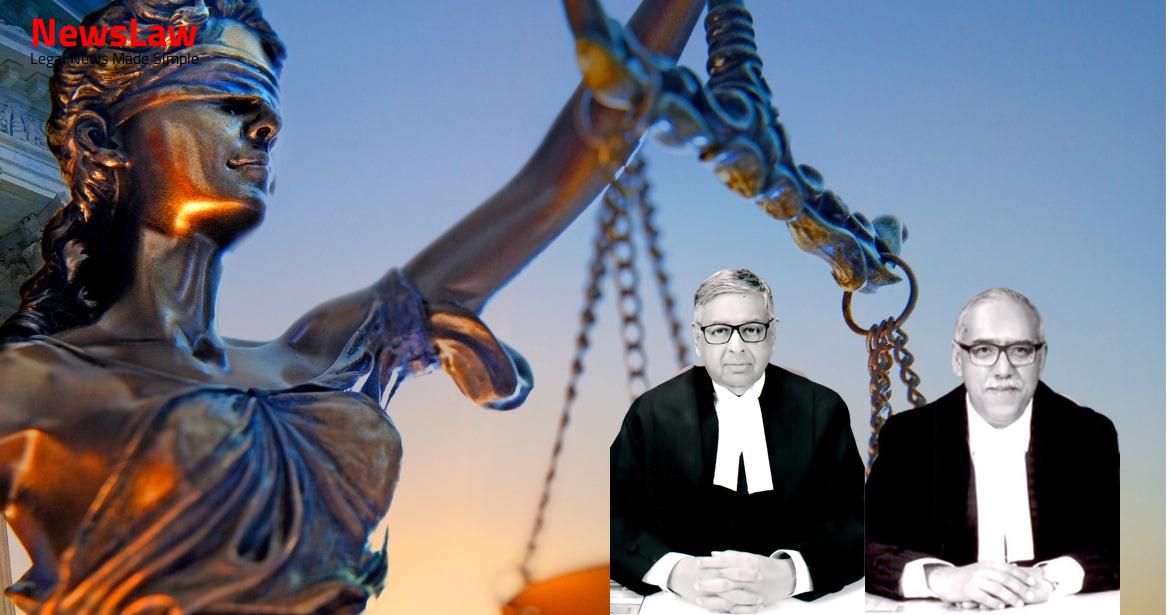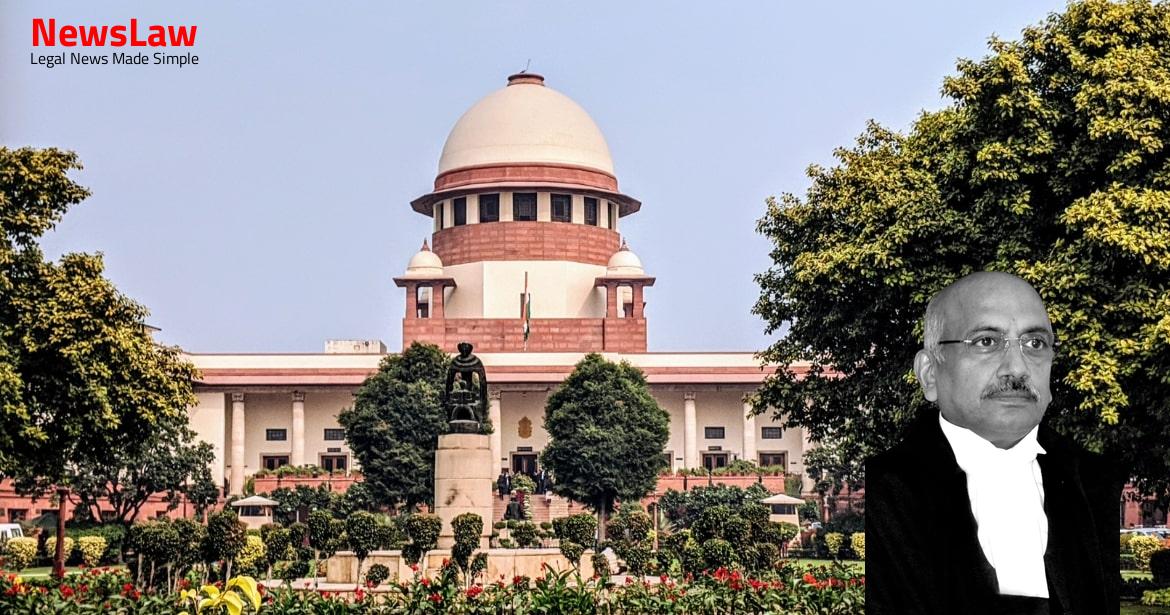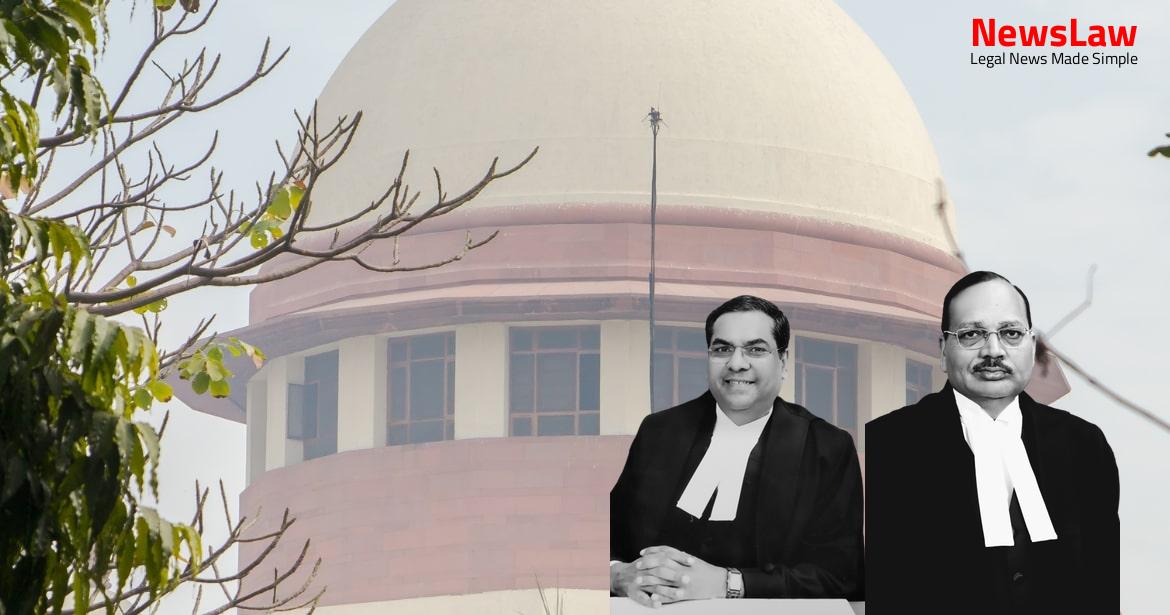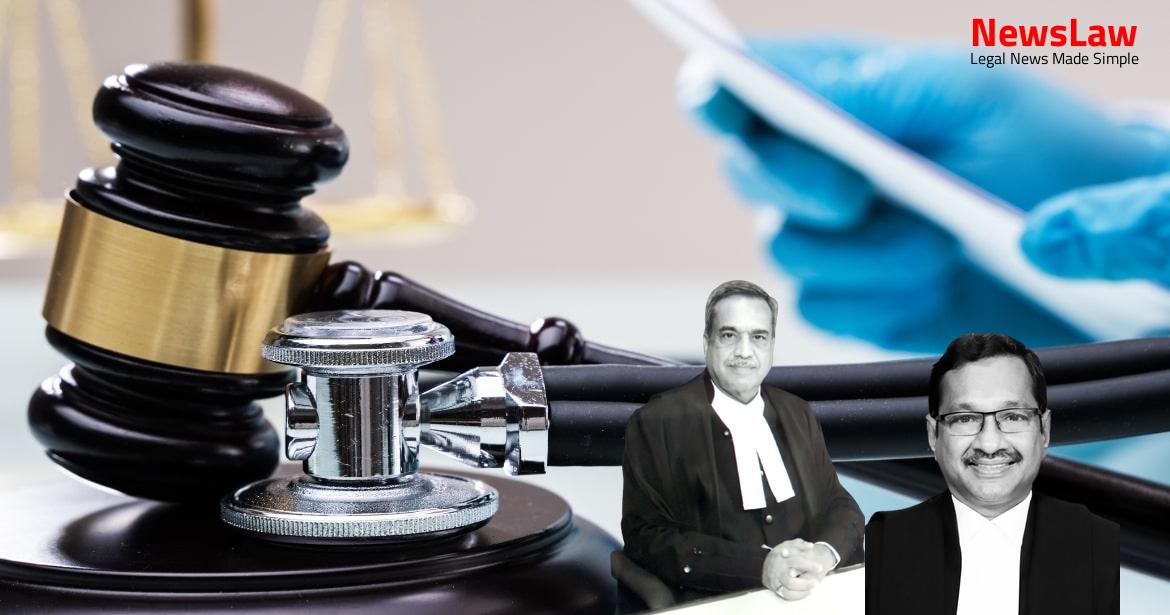Explore the legal analysis carried out by the Court in a recent case involving scandalous allegations against judges. The Court’s thorough examination of contempt laws, fair criticism, and due process sheds light on the delicate balance between freedom of expression and respect for the judiciary. Delve into the layers of judicial scrutiny in upholding justice and preventing malicious attacks on the integrity of the legal system.
Facts
- Shri Mathews Nedumpara was discharged initially, but could be summoned again if evidence emerges against him during proceedings.
- Shri Nilesh Ojha raised concerns about incomplete document copies provided to him by the Registry.
- Alleged contemnors were summoned due to scandalous allegations made against the Bench members.
- Shri Sidharth Luthra was appointed as amicus curiae to assist the Court.
- Alleged contemnors admitted to receiving documents after which they were permitted to file fresh replies.
- Registry was directed to provide complete annexures to the alleged contemnors.
- Two complaints, one by Indian Bar Association and the other by Human Rights Security Council, were cited in the proceedings.
- Alleged contemnor Shri Nilesh Ojha’s involvement was linked to a letter dated 20.03.2019, even though it was not signed by him.
- Alleged contemnors were accused of contempt of the Bombay High Court as well.
- Charges against each alleged contemnor were specified to be related to scandalous allegations against the judges of the Court made in specific letters.
- Shri Mathews Nedumpara denied knowing two of the alleged contemnors and filed for discharge.
- Registry was directed to provide Annexures P1 to P15 to all alleged contemnors.
- Complaints sent to President of India and Chief Justice of India, circulating on social media, were referenced in the proceedings.
- Shri P. Shiv Shanker was not found guilty of contempt of court.
- Contempt petition could not have been filed without the consent of the Advocate General.
- The Bombay High Court did not determine whether Shri Nedumpara was in contempt of court.
- The matter was directed to be placed before the Chief Justice of India to form a suitable Bench for the contempt case.
- The court assessed whether the petition could have been entertained on behalf of Shri Duda.
- The respondent was consistently shown as the petitioner in the contempt petition, indicating no suo motu initiation of proceedings.
Arguments
- Shri Vijay Kurle and Shri Rashid Khan Pathan filed complaints containing scandalous and contemptuous allegations against judges of the Court.
- The complaints included allegations of judges acting with malafide intentions, misinterpreting laws, and breaching their oath of office.
- Shri Vijay Kurle accused Justice Nariman of wanting to keep advocates away from his Court, attempting to silence advocates representing his opponents, and violating fundamental rights of advocates.
- Allegations were made that the judges deliberately ignored legal positions, misused power, and acted with ulterior motives to help certain individuals.
- There were references to previous judgments, complaints of abuse of the court process, and accusations of running a syndicate to extort money for favorable orders.
- The language used in the complaints was intemperate, disrespectful, and scandalous, with unfounded allegations and implications of corruption and bias.
Analysis
- The Court analyzed the situation where the complaint by Shri Vijay Kurle was filed in connection to an order dated 12.03.2019, which was before Shri Nedumpara had been heard on the issue of sentence.
- The two complaints sent by Shri Vijay Kurle and Shri Rashid Khan Pathan were issued even before Shri Nedumpara had the opportunity to be heard.
- It was observed that these communications made by the alleged contemnors were widely circulated on social media, indicating potential malintent to influence the judges into refraining from taking action against Shri Nedumpara.
- It was deduced that Shri Rashid Khan Pathan was primarily attacking the Members of the Bench and the Supreme Court, possibly under the direction of Shri Nilesh Ojha or Shri Nedumpara.
- The alleged contemnors were viewed as supporting each other and making baseless, scandalous allegations against the Members of the Bench, with the aim of obstructing judicial proceedings against Shri Nedumpara.
- Cognizance can be taken suo motu by the court if any writing or visual media prima facie shows contempt or scandalizes the court.
- Individual letters addressed to a judge should be placed before the Chief Justice for further action.
- Criticism about the judicial system is allowed as long as it does not impair justice or undermine confidence in the judiciary.
- The purpose of contempt laws is to maintain respect and confidence in the judicial system to prevent the administration of justice from being undermined.
- The power to punish for contempt is a wide yet limited jurisdiction which cannot bypass the due process prescribed by law.
- The Judiciary is subject to criticism, but personal attacks or questioning the integrity of judges is not permissible.
- Citizens have the right to criticize court judgments, but not to impute motives or competence of judges.
- The Supreme Court has the power to punish for contempt of itself, which is not bound by the provisions of the Contempt of Courts Act.
- The law of contempt ensures fair criticism is permissible, but not conduct that interferes with justice or brings the judiciary into disrepute.
- Rules and procedures for contempt proceedings have been laid down by the Supreme Court to ensure fair treatment of the accused.
- Contempt of court is a constitutional power that cannot be taken away or limited by statute.
- Article 142 of the Constitution grants the Supreme Court the authority to pass decrees or orders for complete justice, enforceable throughout India.
- The Supreme Court has the power to make orders to secure attendance, discovery of documents, or punish contempt of itself.
- Contempt action can be initiated suo motu, by the Advocate General/Attorney General/Solicitor General, or with their written consent by any other person.
- Section 17 of the Contempt of Courts Act outlines procedures for actions initiated by the aforementioned authorities.
- Legislative powers of Parliament and State Legislatures extend to matters connected with contempt of court, but cannot undermine the Supreme Court’s inherent power to punish for contempt.
- Parliament has not enacted any law specifically dealing with the Supreme Court’s powers regarding contempt investigation and punishment.
- The Disciplinary Committee of the Bar Councils has jurisdiction over punishing advocates for professional misconduct, not Article 129.
- The language of the order passed in the case indicated that it was not a suo motu action by the Court.
- The Court relied on the judgments in the cases of P.N. Duda and Bal Thackrey v. Harish Pimpalkhute and Ors.
- It was emphasized that this case did not involve the Court taking suo motu action.
- Allegations against Judges of the highest Court are scurrilous and scandalous
- Truth can be used as a defense for contempt of Court
- No material provided to support the defense against Judges misinterpreting or being biased
Decision
- Rejection of baseless allegations against the individual
- Finding Shri Vijay Kurle, Shri Rashid Khan Pathan, and Shri Nilesh Ojha guilty of contempt
Case Number: SMC(Crl) No.-000002 / 2019



